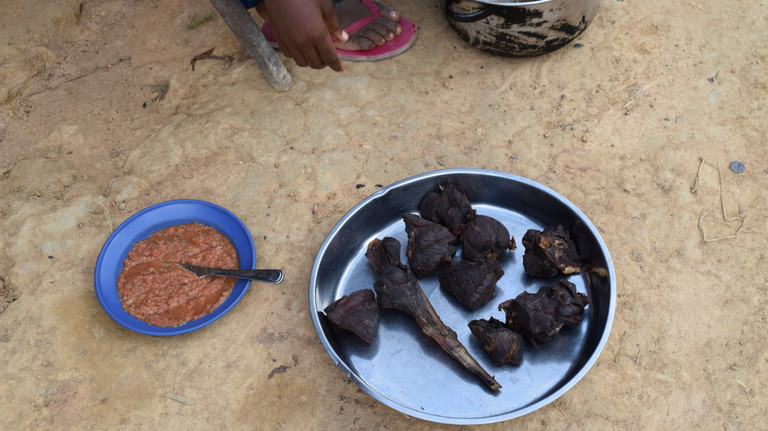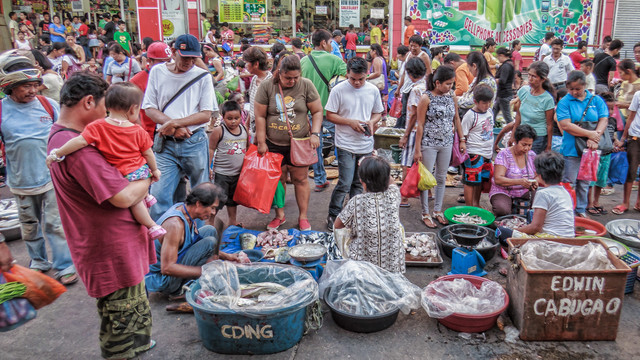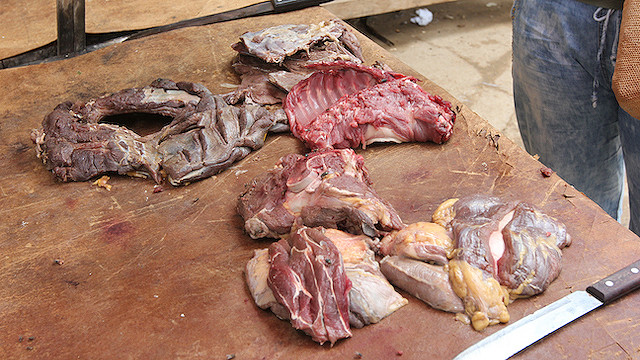Wild meat: is there an appetite for alternatives?
The age-old tradition of hunting wild meat has, in many cases, become unsustainable. Efforts to change local habits have had little effect. Ahead of this year’s International Day for Biological Diversity, guest blogger Stephanie Brittain argues that to protect biodiversity, without compromising health and livelihoods, we need to understand much more about why people eat wild meat.


A timber concession road cuts through the forest in east Cameroon (Photo: copyright Stephanie Brittain)
This year’s International Day for Biological Diversity calls on the world to recognise biodiversity as critical for safeguarding global food security, and as the foundation of human health.
Sustainable use of our natural resources supports healthy and resilient communities. But when these systems fall out of balance, our wellbeing and the biodiversity that underpins it come under threat.
Hunting for wild meat such as primates, ungulates and rodents has been practiced for hundreds of years by rural communities across sub-Saharan Africa. However, increased pressure and fragmentation of habitat (increases access to forest by hunters), modernised hunting practices (more animals are hunted per trip), rising rural consumption and growing demand from urban markets is making wild meat hunting unsustainable.
The practice is considered an important contributor to declining species populations, particularly slow breeding mammals such as great apes, monkeys and antelopes. In extreme cases, overhunting is resulting in forests empty of wildlife. These depleting animal populations present threats to both conservation and food security.
The power of tradition, taboo and personal taste
Conservation interventions that seek to reduce the reliance on wild meat hunting have long assumed that people in rural communities eat wild meat because they have no other choice. Projects have tried to steer consumption toward alternatives by encouraging communities to rear protein sources such as chickens, guinea pigs or cane rats.
However, these projects fail to recognise the multifaceted reasons for eating wild meat. These include century-long traditions, taboos, culture, cost, ease of access or simply taste preference.

Experience has found these factors win out, even when alternatives are available. As such, conservation resources are being wasted, and communities – having been given hope that their lives will be made easier with the need to hunt less – are left disappointed.
An appetite for alternatives?
If projects are to be more successful we need to step back and better understand the diverse reasons that draw people to hunt and eat wild meat, and how these drivers are influenced by factors such as gender, age or income. Only then can we design projects that offer suitable alternatives.
And any alternatives must be offered with a clear understanding of what people will not compromise on. So, if people prioritise taste above all other factors, the substitute must be something that communities love to eat; if ease of access or respecting tradition is deemed highly important, the meat must be readily available and be a type of meat that traditionally both men and women are allowed to eat.
The need for local voices to be front and centre of future conservation efforts is even more pertinent given the increasing attention on the ethical conduct of conservation organisations. Local people’s agency and knowledge can no longer be excluded.
This is crucial for the legacy of conservation and, more importantly, for the participants of research and subsequent projects, who often feel conservation efforts fail because their ideas on what local people want from initiatives to develop alternatives aren’t incorporated. Outsiders coming into communities with projects that neglect to connect with local priorities can leave a bitter taste.
Set to digest fresh ideas on eating wild meat
A new collaboration between IIED, the Interdisciplinary Centre for Conservation Science (ICCS), the Living Earth Foundation and Cameroonian NGO Fondation Camerounaise de la Terre Vivante (FCTV) aims to address the gap in our understanding of why people elect to eat wild meat. Project findings will seek to inform future interventions so they can be designed to bring greater benefit to communities while safeguarding overhunted species.

The Why eat wild meat? project will draw on what has and hasn’t worked from past initiatives, and combine this with on-the-ground research carried out in wild meat-dependent communities adjacent to Cameroon’s Dja Faunal Reserve. This reserve is notable for its diversity of primates and other mammals. Here, rural people hunt and consume a range of wild animals, including threatened species such as chimpanzees, gorillas, dwarf crocodiles and giant pangolins.
The research will gather information on what’s motivating people to eat wild meat and explore interventions that offer substitutes. It will pay particular attention to the consumption of endangered species.
This year’s International Day for Biological Diversity shines a spotlight on the inextricable link between food security, human wellbeing and biodiversity. If we are to “bend the curve of biodiversity loss” with the post-2020 global biodiversity framework, we need to understand the underlying drivers.
This project will provide new food for thought on why past initiatives have failed to achieve their conservation and food security objectives. At the same time, it will build evidence from the ground to enable rural communities across sub-Saharan Africa to sustainably use and benefit from wild meat, while conserving increasingly threatened wildlife species.
Help our work
Do you have information to share on wild meat projects and food choice in sub-Saharan Africa? We would greatly appreciate you taking 10-15 minutes to complete one of our surveys:
- For government officials, donors and NGO staff and academics working in sub-Saharan Africa, please complete: https://www.surveymonkey.com/r/KDGMPVJ
- For practitioners, including those involved in designing and implementing bushmeat alternatives projects (commonly referred to as alternative protein or alternative livelihoods projects) in sub-Saharan Africa, please complete: https://www.surveymonkey.co.uk/r/LM5Q5Z6




